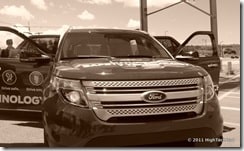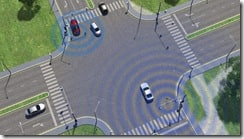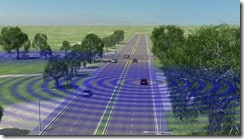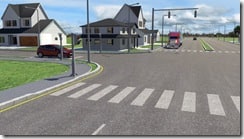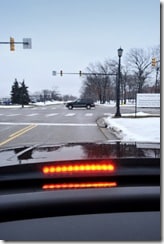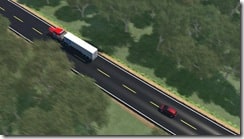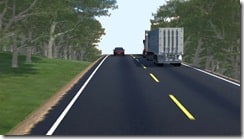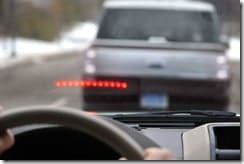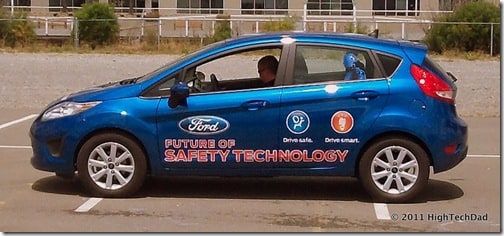Last week, Robert Scoble (Scobleizer.com), Mark Hachman (PCMag.com) Xavier Lanier (Notebooks.com & GottaBeMobile.com ) and I squished into a Ford Explorer to get a preview of some new safety technology that Ford and other auto manufacturers are starting to develop. With this new tech, appropriately outfitted cars actually “talk” to each other, many times a second, sending information about speed, proximity, location and other data points, creating what amounts to a 360 bubble of communication around the car.
Cool right? Well, the even cooler thing is that Ford isn’t the only manufacturer working on this technology, pretty much all of the main automobile manufacturers (e.g., Ford, General Motors, Nissan, Honda, Toyota, Volkswagen, Audi, Mercedes, Hyundai, and Kia) are working together to develop this communication and safety technology. Also, Ford is working with the federal government to ensure that standards are met when this technology is rolled out.
Technology Preview Video
Before I dive into some more about these “intelligent vehicles” that message each other, why don’t you see it in action for yourself in the video below. I realize that videos over 15 minutes are a bit long, but there is a lot of interesting material that was given to us by Mike Shulman, Technical Leader of Ford Active Safety Research and Innovation.
The video goes into how this technology works as well as shows 8 common driving scenarios that are potentially dangerous but are made safer using this Wi-Fi technology. The scenarios that we went through were:
- Emergency Electronic Brake Light – when a car puts on the brakes a few cars ahead of you but you can’t see it
- Relative Positioning – the cars are smart enough to ignore each other when there is not a safety threat
- Avoiding a Hidden Stopped Car – a car is stopped ahead but you can’t see it because another car is ahead of you moving
- Lane Change Warning – a 360 bubble allows you to change lanes when no vehicles are in your blind spots
- Forward Collision Warning – similar to the first scenario but just with a car in front of you breaking quickly
- 2-Lane Road Passing – imagine a country road and you want to pass but you need to pull out into on-coming traffic
- Blind Intersection – being able to see around large objects
- Cross Traffic – being safer at dangerous intersections
[iframe_loader width=”560″ height=”349″ src=”http://www.youtube.com/embed/RrCyl6pOAC0?rel=0″ frameborder=”0″ allowfullscreen]
This technology is not only real and in development AND being worked on with a group of manufacturers, it also is using more “commonplace” technology. Most new cars come equipped with GPS and many now even have basic WiFi built in. By simply combining these two technologies in an innovative way, cars can literally “talk” to each other wirelessly using short-range communications. Do note, this is a special WiFi protocol (802.11p)
In many higher-end automobiles (like the Lincoln MKX which I reviewed here), radar technology is built-in. The problem with this tech is that is tends to be quite expensive, adding at least $1000 to the sticker price for features like adaptive cruise control or blind side indicators. Also, radar only works with objects that are right in front, to the side or behind you and cannot see beyond that. These two items (cost and “right in front”) are two of the main limitations and prohibitive factors to using it ubiquitously for safety technology.
WiFi can literally see through objects and is not confined directionally the way that radar is. WiFi offers a 360 degree “view” and detection. And, it can peak around corners or large objects, as you saw in the video above (Scenarios 7 and 8). And, when you think about smart phones, both WiFi and GPS are already built in, meaning that you could conceivably “retrofit” older cars by just being inside of those cars. This was one of the important points to using the GPS/WiFi combination – it’s commonplace and inexpensive, and it doesn’t need to be limited to being built into automobiles. It can be used on other objects like stop lights, trucks, motorcycles and pedestrians or bicyclists.
Here are a couple of the scenarios that were demonstrated.
Intersections
When hazards are visible, you are naturally safer. However, if there are objects obstructing your view, the dangers of a collision increase. With appropriately configured autos, drivers can know when there are dangers at or approaching an intersection and can be warned about them early enough to take preventative measures.
Above, the house blocks the visibility of the two autos.
The driver gets a warning of cross traffic.
Lane-Passing Assistance
Does this scenario look familiar?
When passing cars or trucks on rural roads, sometimes it is difficult to know what kind of traffic is heading your way. I have found it always to be a race to shoot past the auto you are passing, hoping that another car isn’t barreling down the road at you head on. With the intelligent vehicle technology, you will be warned if a car that might be out of you line of sight, and if it is heading down a collision course towards you. By having an early warning system, you could dramatically reduce the number of head-on collisions.
Unfortunately, this safety technology is not yet available to you and me yet. It’s going to take a few years for it to even begin showing up in new automobiles. And, in order for this technology to work the most efficiently, all cars need to be outfitted with it, and that will take even more time. However, I believe that if this can be rolled out into smartphones, we could see it having a positive effect sooner rather than later, but again, it would require people to have smartphones, have them equipped with the technology and actually use it.
Look at for 2015 cars to start showcasing this safety technology. I know, it’s a long ways away, but just having experienced this technology in action is quite encouraging. It’s real, it’s being tested and people are talking about it. There is even going to be a full-city test where 1000’s of these DSRC (Dedicated Short Range Communications) nodes will be deployed through out the city and in vehicles of all types. More details on Ford’s Intelligent Vehicles can be found at this Ford Media site.
Just as they say in the video above…”3…2…1…GO!” I’m excited to see Ford (and others) racing down the road to make sure that our driving experiences are not only better but safer as well. I can’t wait to see how this evolves.
HTD says: Remember, until we have autos outfitted with DSRC and other safety technology, YOU are the thing that makes your car, passengers and others around you safe! So PAY ATTENTION and don’t drive distracted by gadgets!


